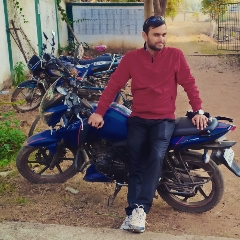Question 1 :
An electron initially at rest is accelerated through a potential difference of one volt. The energy gained by the electron is:
Question 2 :
As the temperature of a conductor increases, its resistivity and conductivity change. The ratio of resistivity to conductivity
Question 3 :
An electric kettle is rated as $2.5\ kW, \ 250\ V$. Find the cost running the kettle for two hours at $60\ \text{paisa}/\text{unit}$.
Question 4 :
You have the following appliances each of $500\ W$ running on  $220\ V$ a.c.: (1) Electric iron.(2) Electric lamp. (3) Electric room heater. The electric resistance is:
Question 5 :
If the length of a material changes 4 times and area changes 2 times. Then the resistivity of the material will be changing
Question 6 :
A bullet of mass 2 g is having a charge of 2 $\mu$ C. Through what potential difference must it be accelerated, starting from rest, to acquire a speed of 10 m/s ?  
Question 8 :
Assertion : Material used in the construction ofa standard resistance is constantan or manganin<br>Reason : Temperature coefficients of constantan and Magnanin arevery small<br>
Question 9 :
<span class="wysiwyg-font-size-small"><span class="wysiwyg-font-size-small"><p class="wysiwyg-text-align-left">The two surfaces A and B are at the same potential and separated by a distance $r$. The work done in carrying a charged particle ($q$) from A to B will be:</p>
Question 10 :
The kinetic energy of an electron, which is accelerated in the potential difference of $100\ V$, is
Question 11 :
A bulb of $2.5 V$, draws a current of $0.5 A$. If the bulb is switched on for 2 minutes, calculate the energy released by the bulb.
Question 12 :
Masses of three wires of the same metal are inthe ratio $1:2 :3$ and their lengths in the ratio $3:2:1$.Electrical resistances of these wires will be inthe ratio<br><br>
Question 13 :
Two identical thin rings, each of radius $10 cm$ carrying charges $10 C$ and $5 C$ are coaxially placed at a distance $10 cm$ apart. The work done in moving a charge $q$ from the centre of the first ring to that of the second is
Question 15 :
On an electric heater 220 volt and 1100 watt are marked. On using it for 4 hours, the enrgy consumed in kWh will be
Question 16 :
An electric bulb is connected to a $20$ V battery of negligible internal resistance. The resistance offered by the bulb is $5$ $\Omega$. The electrical energy consumed by the bulb in $3$ hours is _____ kWh.
Question 17 :
An electric motor operating on $50 V$ D.C. supply draws a current of $10 A$. If the efficiency of the motor is $40\%$, then the resistance of the winding of the motor is:<br/>
Question 18 :
What should be the bill for the month of April for a heater of resistance 60.5 $\Omega$ connected 220 V mains, The cost of energy is Rs 2 per kWh and the heater is used for 3 hours daily?
Question 19 :
<p>Copper has one conduction electron per atom. Its density is $8.89{ g }/{ m^3}$ and its atomic mass is 63.54 g/mol. lf a copper wire of diameter 1.0 mm carries a current of 2.0 A. What is the drift speed of the electrons in the wire?</p>
Question 20 :
A number of condensers, each of capacitance $1\mu F$ and each one of which gets punctured if a potential difference just exceeding $500\ V$ is applied, are provided. An arrangement suitable for giving capacitance of $2\mu F$ across which $3000$ volt may be applied requires at least.
























